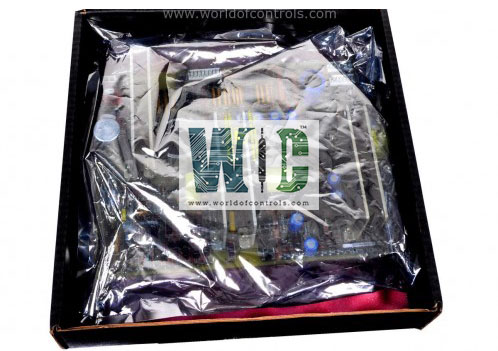SPECIFICATIONS
Part Number: IS230TNAOH2C
Manufacturer: General Electric
Series: Mark VIe
Function: Analog Output Module
Ambient temperature: 30oC to 60C
Ambient temperature: 20oC to 30oC
Relative humidity: 5 to 95 percent
Availability: In Stock
Product type: Analog Output Module
Country of Manufacture: United States (USA)
Functional Description
IS230TNAOH2C is an Analog Output Module developed by GE. It is a part of the Mark VIe control system. This module is designed to convert digital control commands into precise analog output signals, enabling seamless communication between the control system and external field devices. It serves as a key interface for managing and regulating analog-controlled components.
Features
- Within the Mark VIe control architecture, the module plays a vital role in translating digital data from the controller into analog signals that can be used by external equipment such as actuators, control valves, motors, and instrumentation devices. The module ensures accurate, stable, and synchronized analog signal generation, making it indispensable for systems requiring real-time control and fine-tuned performance.
- The TNAO module’s design emphasizes signal precision, fault isolation, and redundancy compatibility, aligning with GE’s commitment to safety, reliability, and operational continuity in industrial environments.
- Digital-to-Analog Conversion: Converts digital control commands from the Mark VIe controller into continuous analog output signals, typically in voltage or current form, for use by external process control devices.
- Multi-Channel Output: The module supports multiple output channels, allowing simultaneous generation of several analog output signals. This multi-channel functionality enables the control of numerous field devices from a single module, enhancing efficiency in large-scale systems.
- Signal Accuracy and Stability: Each output channel incorporates precision circuitry that ensures the generation of accurate and stable analog signals. This stability is essential for maintaining the desired operation of sensitive devices like proportional control valves and variable speed drives.
- Fault Isolation via Mechanical Relays: Each analog output circuit is equipped with a normally open mechanical relay. These relays can enable or disable individual output operations, providing controlled signal management. In the event of a fault, they isolate the affected circuit to prevent interference with other operational outputs, ensuring continued system reliability.
Enhanced Reliability in TMR Systems
- In Triple Modular Redundancy (TMR) configurations—commonly used in safety-critical and high-availability applications.
- The module’s built-in mechanical relays act as fault isolators, disconnecting any failed outputs while allowing the remaining channels to continue functioning correctly.
- This design ensures that the accuracy, synchronization, and reliability of control signals are not compromised by single-point failures.
- As a result, the module contributes significantly to the fault tolerance and redundancy management of the overall Mark VIe control system.
Product Attributes
- Multiple analog output channels for simultaneous operation.
- High-precision output generation for accurate control.
- Built-in mechanical relays for output isolation and control.
- Fault isolation and redundancy support in TMR configurations.
- Designed for integration within the GE Mark VIe control framework.
Role of Mechanical Relays in TMR Systems
- If a fault occurs in one output circuit, the associated mechanical relay can be deactivated. This action effectively disconnects the faulty output from the customer load, preventing it from affecting the operation of other circuits.
- By isolating failed outputs, the mechanical relays help maintain the reliability and performance of the overall system, ensuring uninterrupted operation even in the event of a fault.
Status Monitoring and Feedback
- Dual Functionality: The mechanical relays incorporate a second normally open contact, serving as a status indicator for monitoring their position.
- LED Status Indication: The status information provided by the relays is visually indicated by LEDs, allowing operators and maintenance personnel to quickly identify the position of each relay.
Integration
- Fault Detection and Isolation: By integrating mechanical relays, the Analog Output Module enhances fault detection and isolation capabilities in TMR systems, contributing to the overall robustness and performance of the Mark VIe control system.
- Enhanced Reliability: The module's ability to isolate failed outputs ensures the continued reliability of analog outputs, minimizing downtime and maximizing system uptime in industrial applications.
WOC is happy to assist you with any of your GE requirements. Please contact us by phone or email for pricing and availability on any parts and repairs.
FREQUENTLY ASKED QUESTIONS
What is IS230TNAOH2C?
It is an Analog Output Module developed by GE.
What is the purpose of the mechanical relay in each analog output circuit?
The mechanical relay included in each analog output circuit serves the purpose of enabling or disabling the operation of the output. It provides a means to control the flow of analog signals to external devices or systems.
Why is the inclusion of a mechanical relay significant in TMR systems?
In TMR systems, where redundancy and fault tolerance are crucial, the mechanical relay plays a vital role. If one of the Parallel Analog Interface Cards (PAICs) fails, it is necessary to isolate the failed output to prevent interference with the correct outputs generated by the remaining PAICs.
How does the mechanical relay isolate a failed output in a TMR system?
When a failure occurs in one of the PAICs, the associated mechanical relay is de-activated. This de-activation opens the relay, interrupting the circuit and effectively disconnecting the failed output from the customer load connected to the terminal board. This isolation ensures that the faulty output does not impact the accuracy and reliability of the overall system operation.
